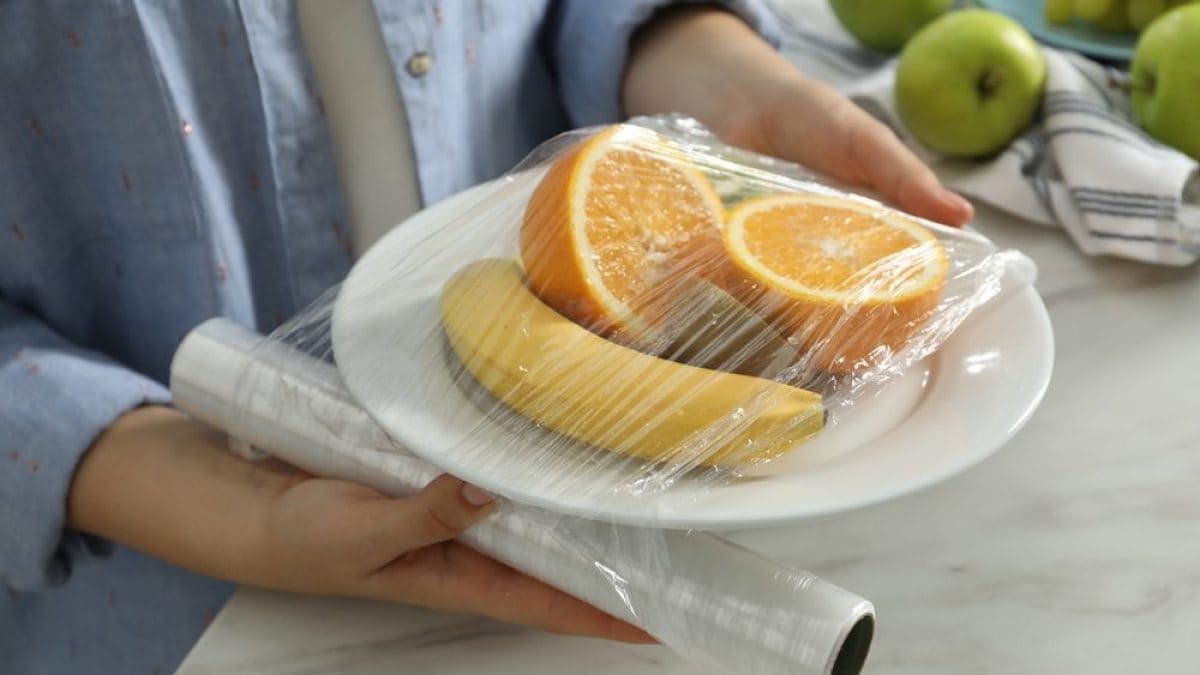
With summer, kitchen habits change: the heat, in fact, not only modifies the menu (with the intention of turning on the oven and stove to a minimum), but also forces us to recalibrate the way we store food, including those that go in the refrigerator, an appliance that in this period suffers from overloads and continuous openings. High temperatures, high humidity and even sudden changes in temperature accelerate the deterioration processes of food. Most often considered an ace up the sleeve for wrapping anything, cling film during the summer must be used with more care because not all foods with the new conditions react in the same way to prolonged contact with this material and its effects, which can compromise consistency, flavor and even safety.
Cling Film in Summer: Why It Might Not Work
Made mostly of PVC or, to a lesser extent, of polyethylene (PE), cling film is designed to create a protective barrier against air and odors, reducing the oxidation of foods: these are generally materials that experts advise against putting in the microwave because they can melt or using them on still hot foods, as they can generate condensation, given that they are waterproof. And this is precisely the problem: the film retains humidity and does not allow it to breathe, becoming a trap especially for foods composed mainly of water and fats. Let's see which ones are most at risk.
- Fresh cheeses. Ricotta, stracchino, robiola risk fermenting very quickly, developing mold and unpleasant odors. The advice is to preserve them in the packages in which they were purchased, placing everything inside airtight containers.
- Ripe fruit. Want to take a handful of cherries to work? Well, if you don’t have a container with a lid, opt for some simple kitchen paper instead so as not to dirty your backpack or bag (even if squashing could be guaranteed) during the journey. The film on this sugary fruit – the same goes for peaches, apricots and figs – combined with heat accelerates their degradation.
- Sliced meats. With scorching temperatures, prosciutto, mortadella, bresaola and sliced meats in general suffer if wrapped in film. Direct contact favors the stagnation of surface fats and alters aroma and consistency: the slices tend to stick together and lose freshness. It is better to leave them in their wrapping, which is made specifically to preserve the organoleptic qualities, while if you bought them in a tray, store them in an airtight container.
- Desserts. Those filled with cream, mascarpone or custard, which therefore have a milk and/or egg base, do not tolerate the humidity retained by the film, which worsens the consistency and facilitates bacterial proliferation. Opt for cake holders and glass bell jars.
- Biscuits. Sometimes you need to transport dry biscuits, perhaps for a trip to the mountains. Well, know that if they stick to the film they lose their crispiness in a flash. The best solution is to store them in classic airtight containers or, alternatively, in plastic bags.
- Sandwiches. Wrapping sandwiches to take away directly in film may seem convenient, but the result is often disappointing: the bread gets moist and rubbery, especially if the filling is rich in watery ingredients (see tomato and mozzarella). It is better to use kitchen paper first and then cover with film or aluminum foil, to avoid the filling from coming out.
;Resize,width=767;)
